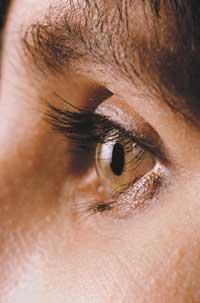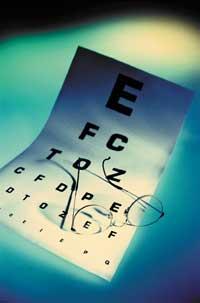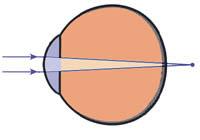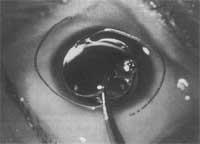Farewell to glasses and lenses
2002/11/01 Agirre, Jabier - Medikua eta OEEko kidea Iturria: Elhuyar aldizkaria

Until about ten years ago, visual problems only had two solutions, and partial ones were glasses or contact lenses. Corrective measures that ultimately gave a solution in one way or another rather than radically solving the problem. However, laser technology offers a total revolution, as it solves the problem forever, quickly and painlessly.
Why operate?
This type of surgery is fashionable in recent years and is spreading day by day for different reasons. These reasons include aesthetic issues, comfort and economic reasons. And, although the cost of the operation is relatively high, it must be taken into account that the problem disappears forever and that this person will never have to worry anymore. In some cases, in addition, the need or need is included in the game, especially in the case of people who must have an adequate level of vision to perform a certain job or sport.
What problems can be solved?

Problems such as nearsightedness (poor remote vision), farsightedness (poor near vision), and astigmatism (visual problem that makes us see deformed images) can be treated at the moment. However, as experts say, laser operations do not cure optical errors, but correct them completely and forever. What does this mean? That the eye with myopia will continue to have myopia despite the operation, and that will have to continue exploring. For the moment, what is called tired vision, that is, a problem that forces to use glasses to fix the vision from 40-50 years (read, sew or work with the hands), without surgical solution.
Visual correction techniques
There are three surgical techniques of high safety and efficiency. It depends on the patient's age and visual acuity.
Mild visual problems

The LASIK technique is performed with the Excimer laser, ideal for patients with myopia less than 12 diopters, hyperopia less than 5 or astigmatism less than 7. It is a relatively simple operation, without hospitalization of the patient, with a few drops of local anesthesia in the eye; the visual problem is solved by laser technology, polishing of the cornea and apparatus that allows to correct its curvature (without leaving any scar). The procedure lasts up to twenty minutes and the patient returns home without pain or discomfort. Visual recovery is immediate, reaching 50% of vision 24 hours after operation and 80-100% a week. The results are excellent in 95% of cases.
Young people with great visual problems
In young patients with very high myopia (greater than 12 diopters), or hyperopia of more than 5 diopters, another surgical technique is used; in the anterior or posterior chamber of the eye a lens is placed because it is not possible to try to correct the thickness or curvature of the cornea, since the laser, as in previous cases, cannot solve the defect in a “mechanical” way. The biggest advance of recent years has been the implantation of a flexible lens, since this type of lenses, unlike rigid ones, only require a cut of 3 millimeters (in this way no points should be given). This type of intervention is performed under local anesthesia, without special contraindications in the hands of a surgeon.
Older patients with poor vision

This third technique is applied to people over 45 years old with very large myopias or hypermetropias and also with cataracts or cataracts more or less cataracts. It is the same surgical technique used in cataract repair. The lens is removed and replaced by a lens that eliminates cataract and corrects nearsightedness or farsightedness. Normally the patient recovers sight at the very moment the operation ends. This technique usually gives very good results and usually no problem occurs if the patient is chosen well.
Thanks to the latest advances in ophthalmological surgery, a personalized study of each patient is now carried out. To do this, the visual problems and cornea of each person are analyzed. This allows us to accurately calculate the extent to which the cornea tissue should be removed in each case, depending on the thickness of the cornea left to the patient. It also analyzes the sensitivity to light and the problems the eye may have to the dark and colors. The objective is not only to improve vision, but, reducing the number of diopters of the patient, the aim is to adapt the surgical intervention to the characteristics of each eye.
Frequently asked questions
- Results The total success of the operation cannot be assured, but the number of diopters will be drastically reduced.
- Treatment The specialist must decide which of the three treatments mentioned should be chosen. Sometimes LASIK technology is combined with flexible lens implantation.
- The duration of the intervention depends on the number of Diopters, but usually does not exceed 20 minutes.
- Mine is not a painful operation. Postoperative discomfort disappears by taking an analgesic.
- Can the same problem reappear? Nearsightedness, farsightedness or astigmatism usually do not reappear, but in this case the operation can be repeated.
- Is it possible to operate both eyes at once? In the case of myopia and astigmatism, the intervention can be performed on both eyes the same day. Not so in the case of farsightedness.
- Price between 1,500 and 2,000 euros.

Gai honi buruzko eduki gehiago
Elhuyarrek garatutako teknologia





